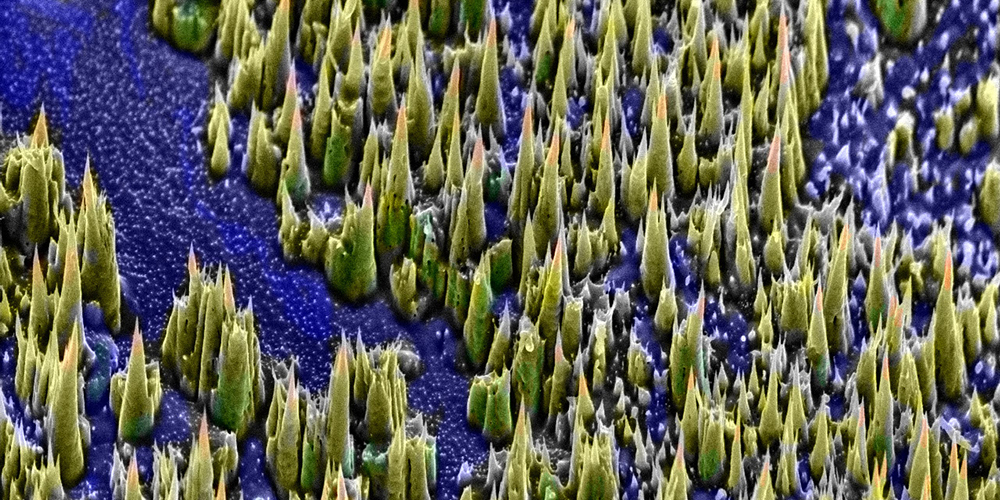Dental implants like a cicada’s wings.
Text: Angelika Jacobs
The oral cavity is populated by hundreds of different species of bacteria, some of which can attack the surface of dental implants, triggering inflammation and potentially leading to the loss of the implant. While antibiotics can help, more and more bacteria are developing resistance to these medications. One possible solution is being pursued by a team of researchers including Laurent Marot and Fabien Sanchez.
The underlying idea is copied from nature — where it enables, for example, the wings of cicadas to remain naturally antibacterial. The surface of the wings is covered with a forest of nanoscale pillars that prevent bacteria from taking hold. In the future, the same trick could also be used to keep dental implants free of germs. Working at the Department of Physics and the Swiss Nanoscience Institute (SNI) of the University of Basel, the team has developed a method for producing similar nanostructures on titanium surfaces.
As part of a Nano Argovia project with the Department of Oral Surgery, University Center for Dental Medicine Basel (UZB), the University of Applied Sciences and Arts Northwestern Switzerland (FHNW) and the dental implant Manufacturer Straumann AG, the team is testing different varieties of these titanium surfaces. Under the scanning electron microscopes from the Nano Imaging Lab these structures were revealed, which are reminiscent of a fakir’s bed of nails.
Although this “bed of nails” kills bacteria, the implant should still bind to the gums. With this in mind, the aim is to create a surface that is inhospitable to bacteria but inviting to tissue cells. Initial results are promising, but the team will need to further optimize the surface before they can test it on a prototype implant.
The images were produced by Daniel Mathys and Susanne Erpel, spike structures by Fabien Sanchez and Laurent Marot and bacteria culturing by Monika Astašov-Frauenhoffer.
More articles in the current issue of UNI NOVA.




